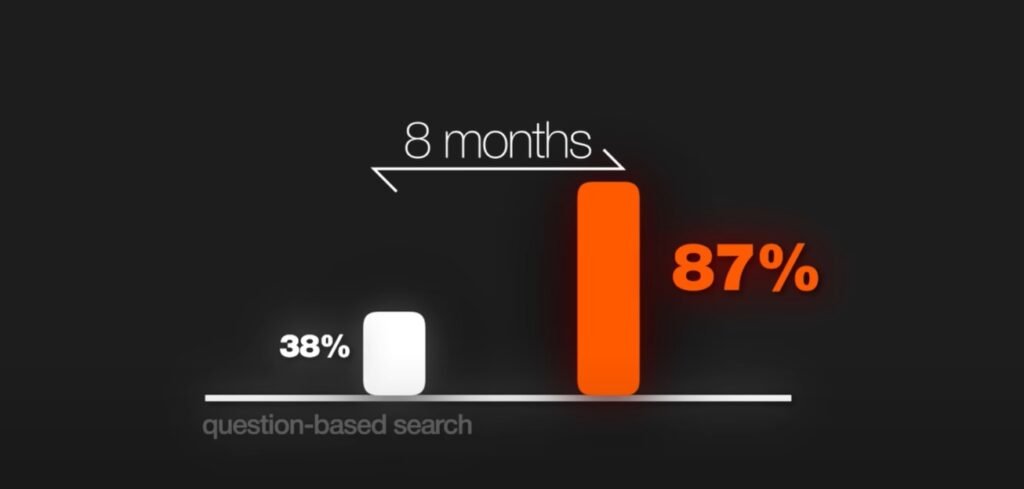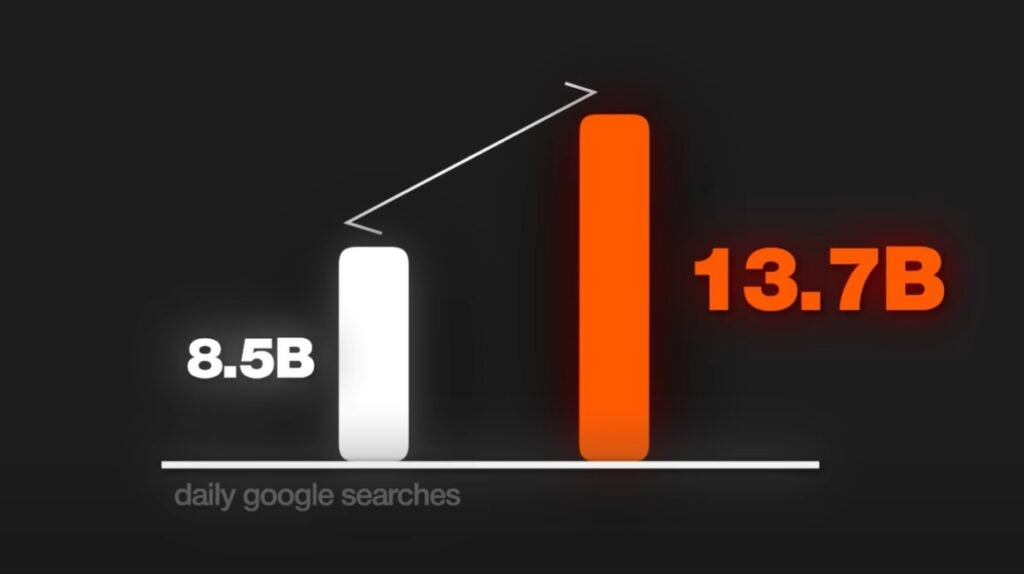How To Train Google’s AI To Send You Customers — The New SEO Playbook for 2025
Google Search isn’t what it used to be. If you think ranking on page one is still the ultimate goal, you’re missing out on a major shift. Google has turned from a list of links into a curated answer engine powered by artificial intelligence. The new challenge isn’t just to get ranked, but to get cited by Google’s AI right at the moment when people are making buying decisions. This is what Neil Patel calls GEO: Generative Engine Optimization.
If your brand isn’t mentioned by AI, you’re invisible. The traffic and brand authority go to those who become trusted sources, not just those at the top of the old-school rankings. This post breaks down how Google’s AI works, why GEO matters, and step-by-step strategies you can use to get your brand front and center in AI-powered search.
Table of Contents
Understanding Google’s New AI-Powered Search
Search has changed in the past year faster than in the last decade. AI now shapes what people see when they go looking for answers, products, or recommendations. This shift isn’t about tweaks—it’s a full rewrite of the rulebook.
Google Isn’t Just a List of Links Anymore
Google has made search results more useful by curating answers directly on the search page. When users ask complex questions, Google’s AI summarizes the web, pulling information from the sources it trusts. If your brand isn’t being mentioned in these summaries, you might as well not exist—no matter your ranking.
GEO, or Generative Engine Optimization, is about steering the AI to recognize your brand as an authority. This means you need more than good on-page SEO. You need to train the AI that your site’s content is credible and useful.
The Surge of Question-Based Searches and Search Volume
Since the launch of ChatGPT and Google’s AI tools, the way people use search has changed:
- Question-based searches have soared from 38% to 87% in just eight months.
- Daily search volume has jumped from 8.5 billion to 13.7 billion searches. That’s over 5 trillion searches every year.
People now use Google like a personal assistant, asking detailed questions and expecting complete answers on the results page. This change means there are more opportunities, but only if your content gets cited in AI answers. Brands that adapt to this format are seen more often and at crucial moments in the customer’s journey.

photo: video screen shot from Neil Patel “Question-based search”

photo: video screen shot from Neil Patel “Daily google searches”
How Google’s AI Features Work: AI Overviews and AI Mode
To understand where the real visibility plays are, you need to know the difference between AI Overviews and AI Mode.
AI Overviews: The Appetizer of Search
Google’s AI Overviews are short, summarized answers at the top of the search page, built from web content. But they don’t show up on every search.
Let’s see how often AI Overviews appear by search type:
| Search Intent | Share of All Google Searches | AI Overviews Appear in These (%) |
|---|---|---|
| Informational | 50% | 45.9% |
| Commercial | 14.8% | 17.8% |
| Navigational | 34.6% | 1.5% |
| Transactional | 8% | 6.1% |
- Informational: These searches are about learning and research—where almost half of queries trigger AI-generated summaries.
- Commercial: People are comparing or thinking about buying—here AI Overviews appear almost 18% of the time.
- Navigational: When people already know where they want to go (like “Facebook login”), the AI steps back.
- Transactional: These are purchase-ready searches. AI Overviews show up on about 6% of these, capturing the moment right before a decision.
Missing from AI Overviews means missing the moment your customer makes a choice. You could rank #1, but if the AI doesn’t mention you, you’re not part of the final answer.
AI Mode: The Full Meal
AI Mode is Google’s next phase. It doesn’t just summarize—it answers full conversations, replacing the usual list of results. Users type a detailed question, and Google’s AI runs a process known as query fanout.
Here’s how query fanout works, using the example question: “When’s the best time this week to schedule an outdoor engagement photo shoot in Boston Public Garden?”
The AI doesn’t just run one search. Behind the scenes, it might investigate:
- This week’s Boston weather forecast
- Top times for outdoor photoshoots
- Boston Public Garden crowd levels
- Golden hour calculations for the area
- Photo tips for Boston locations
- Sunset times specific to Boston, June 2025
Instead of the user running each search, the AI acts like a digital detective, gathering information from many angles. Then it pulls it together into one recommended answer.
Marketers now face a challenge: You can’t see which micro-searches the AI performs. You don’t know what pages it’s pulling from. Traditional tracking is out the window. The only way your content shows up is if Google’s AI trusts and cites it throughout these hidden branches.
Why Ranking Isn’t Enough: The Shift to Semantic Positioning
SEO is no longer about the first position for a set keyword. The goal is to become the trusted source the AI picks up on for an entire topic or intent.
Becoming the AI’s Go-To Brand
This shift puts the spotlight on semantic positioning. The AI isn’t looking for one exact keyword match. It wants content that:
- Covers topics in depth and from multiple angles
- Answers logical follow-up questions
- Shows clear, trustworthy authority
If your content shapes and guides the AI’s understanding, you win not just in clicks but in mind share—the place your brand holds in the customer’s memory. If the AI chooses you as an authority, your visibility multiplies.
Brand Discovery Outweighs the Last Click
For most people, their first exposure to a new brand comes through a Google result:
- 90% of consumers first hear about companies through organic search.
- Only 5% buy right away.
- The rest end up in your email list, ad funnel, social network, or remember you weeks later because of the brand mention.
SEO has become a high-speed billboard—your name and authority being broadcast at the top of answers, even when someone doesn’t click. Like sponsor logos on a race car, people may not become customers immediately, but repeated exposure sticks.
How To Get Your Brand Cited in Google’s AI Answers
The goal is to be the site or brand the AI trusts enough to mention. That takes more than adding keywords—it requires building authority and clarity that the algorithm values. Here’s a roadmap you can follow.
Step 1: Find Out What AI Already Trusts Using UberSuggest
Start at UberSuggest and enter a competitor’s domain. If you aren’t sure who your top competitors are, Google a relevant keyword for your business and pick one of the top listings.
UberSuggest will show:
- Estimated monthly traffic
- Top-performing SEO pages
- Backlinks and social media shares
Step 2: Identify Keyword Gaps You Can Close
UberSuggest’s “Keyword Gap” tool reveals what keywords your competition ranks for that you don’t. Here’s a simple process:
- Enter your own domain in UberSuggest.
- Find the section for “Keyword Research” and “Similar Websites.”
- UberSuggest will show you sites competing for your keywords.
- Use the “Keyword Gap” feature to see which search terms drive traffic to rivals but not you.
These aren’t just opportunities for traffic—they’re likely to be the keywords that show up in AI Overviews and sub-questions within AI Mode. Prioritize these gaps. Build useful, detailed content around these to become more valuable to Google’s AI.
Step 3: Build Content Designed to Be Cited
Quality beats quantity. Google’s AI favors content that is:
- Clear and comprehensive
- Easy to consume, with explainer graphics and infographics
- Supported by video summaries or how-tos
- Visually rich, with diagrams and brand visuals
Media-rich content helps users scan and absorb information faster. The AI is built to deliver what people prefer, so mixing written guides with visual assets makes your content more likely to be referenced.
Combine this approach with the keyword gaps from UberSuggest, and you form a blueprint for content the AI will trust.
Content Types That Stand Out for AI Citation:
- Well-planned explainer videos
- Data-rich infographics
- Simple diagrams
- Visual step-by-step guides
- Concise summary tables
By serving both the algorithm and the people using search, you put yourself in the best position to get cited.
The New SEO Playbook: Move from Clicks to Citations
Clicks still drive value, but the focus now is on being named in the conversation—whether or not the user clicks to your site.
Google’s AI gives front-row visibility to trusted sources. Brands that get cited don’t always need the #1 rank or to pour money into ads. They benefit from brand mentions directly within AI Overviews and AI Mode results, building trust and memory every time.
Early adopters have the advantage right now. As more businesses realize what’s happening, the competition for citations will increase. Now’s your chance to shape your authority while many are still chasing the old ranking game.
Build Recognition Across Channels
AI citations pay off across your whole marketing funnel:
- More people will see and remember your brand across search, social, ads, and even through word of mouth.
- SEO becomes the starting point for your sales funnel, driving more activity in email campaigns, retargeting, and beyond.
- Staying cited in Google’s AI results boosts all other channels—your brand starts becoming the shorthand answer for entire topics.
Don’t wait. The faster you adapt, the easier it is to build your place in Google’s new AI-driven era.
Act now to secure brand citations before competitors catch on—early action leads to long-term recognition.
Where To Go Next
If you want to go deeper, Neil Patel’s next video covers how AI agents can help grow your business across all your channels. You’ll learn how to not only get cited by AI but keep building on that foundation with automation and smart strategy.
For advanced help with traffic, leads, and sales using these strategies, check out Neil Patel Digital’s SEO services.
Conclusion
SEO isn’t dead—it’s evolved. Being cited by Google’s AI is the new visibility. Ranking alone won’t cut it anymore. Use the steps above to train Google’s AI to see your brand as the go-to source. Embrace multimedia, fill your keyword gaps, and focus on clarity and authority. Those who move first win the recognition and trust that turns browsers into buyers—now and in the future.
